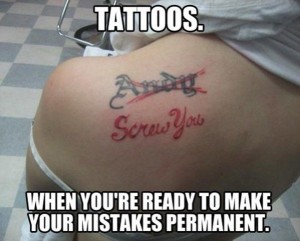Clean Tattoo Equipment, The Key To A Safe Studio
Much like surgery, tattooing involves breaking through the barrier of the skin, a barrier which is in place to protect the individual against infection. If done wrongly, it can be dangerous with the risk of disease.
In order to ensure this does not happen, the tattoo studio should be kept immaculately clean and all tattoo equipment should be sterilized between customers.
Daily disinfecting should take place for all equipment, using alcohol and disposable wipes to sterilize everything. The surfaces should be wiped down, and the general studio should be kept in order as tidiness will make the hygiene tasks far simpler.
As far as is possible, disposable equipment should be used, but for some items this may be prohibitively costly. If any items which have been in contact with blood are to be reused, there is only one sterilization technique accepted by the Alliance of Professional Tattooists in the US.
This is the use of an autoclave, a high pressure machine which fires saturated steam. Equipment which is to be sterilized would first pass through a ultrasonic cleaner for disinfection, then the autoclave.
Once the tattoo machine has been used, it must be taken apart and given a thorough clean with alcohol. When it is reassembled and the needles reattached, it is important to note that they should be attached straight from the autoclave and ultrasonic (or straight from their sealed packet if disposables are being used) without coming into contact with anything else in the tattoo studio.
If they must be laid down, this can be done on a sterilized surface, but best practice is to plan things so this need not happen. If contact is made, the needle must be replaced, or it should go through the process of cleaning again.
The tattooist should always wear well-fitting gloves so puncturing the glove is unlikely. Hands should be well washed before the gloves go on, and once they are on, the tattooist should not allow contact with anything other than the skin of the customer and the equipment necessary for that tattoo.
If, for example, the phone is answered after putting the gloves on, the glove which came in contact with the receiver should be thrown away.
In terms of skin preparation, if shaving is necessary, it should always be done with a disposable razor.
Ensuring this kind of basic hygiene will mean the risks associated with tattoo infections are lessened. This way, the tattooist can concentrate on what they do best: the art of the tattoo.
